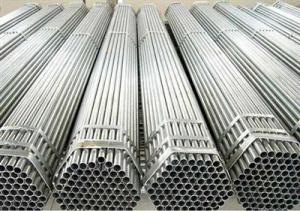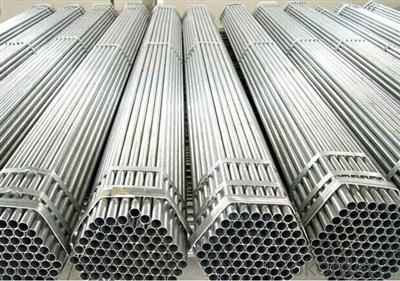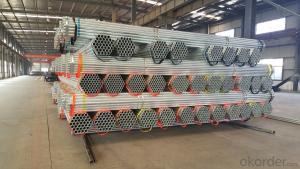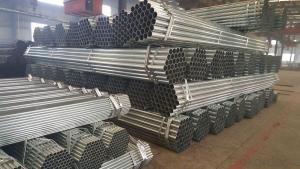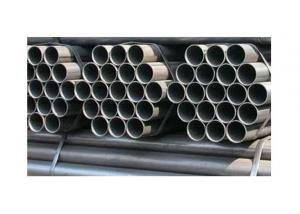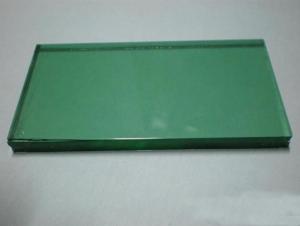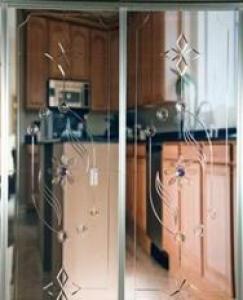Galvanized Seel Pipe with Usage of Building and Construction
- Loading Port:
- China Main Port
- Payment Terms:
- TT or LC
- Min Order Qty:
- 25 m.t.
- Supply Capability:
- -
OKorder Service Pledge
OKorder Financial Service
You Might Also Like
Galvanized Seel Pipe with Usage of Building and Construction
Main Structure of Galvanized steel pipe
Product: Hot sale made in china pre galvanized steel pipe
Size: Round 20-273mm
Square 10*10-100*100mm
Rectangular10*20-80*100mm
THK:0.5-3mm
Length:5.8m or 6m or as per customer request
HS code:7306309000
Zinc coating:60-120g/m2
Advantage of Galvanized Seel Pipe
the same quality as hot dip galvanized pipe, but much cheaper than hot dip galvanized pipe
Application for Galvanized Seel Pipe:
Greenhouse, feence, curtain,construction ect
Plz do feel free to let us know your request details, we will send the competitive price for your reference asap.
1. Packing: in bundles/in bulk/in plastic packing.
2.Trade terms:FOB/CFR/CIF/DDU
3.Shipping port: Xingang Tianjin, China
4.Shipment:
Main Specification for Galvanized Seel Pipe
1) Small diameter: Weight >Measurement
a. Length: ≤5.8m, loaded in 20FT Container, Max 27tons
b. Length: ≤11.8m, loaded in 40 FT Container, Max 27tons
c. Length: ≥12m, shipped by bulk vessel. FILO terms
2) Big dimater: Weight<Measurement, loaded as per container size
a. Size of 20 FT Container(inside :5898*2352*2350mm)
b. Size of 40FT Container(inside: 12024*2352*2395mm)
5.Delivery time: Normal size: 7days send from warehouse directly.
Speial size: 25-30days custom made for you.
Pictures:
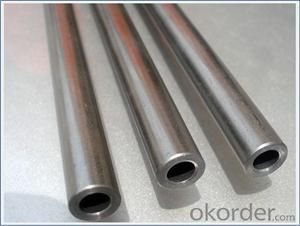

- Q: Can steel channels be used in the telecommunications manufacturing industry?
- Yes, steel channels can be used in the telecommunications manufacturing industry. Steel channels are commonly used in various industries, including telecommunications, due to their strength, durability, and versatility. In the telecommunications industry, steel channels can be used for various applications such as cable trays, support structures for antennas and satellite dishes, equipment racks, and enclosures. Steel channels provide a robust and reliable solution to support and protect telecommunications equipment and infrastructure. Additionally, steel channels can be easily fabricated and customized to meet specific requirements, making them suitable for the diverse needs of the telecommunications manufacturing industry.
- Q: What are the advantages of using steel in the construction of warehouses?
- Using steel in the construction of warehouses offers several advantages. Firstly, steel is a highly durable material that can withstand extreme weather conditions, seismic activities, and heavy loads, ensuring the longevity and safety of the warehouse. Additionally, steel is a lightweight material, making it easier and more cost-effective to transport and install during construction. Steel structures also provide flexibility in design and can accommodate large clear spans, allowing for efficient use of space and easy customization of the warehouse layout. Moreover, steel is a sustainable and environmentally friendly option as it is recyclable and can be repurposed for future use. Overall, the use of steel in warehouse construction offers durability, cost-effectiveness, flexibility, and sustainability.
- Q: I have this paper on a mineral called enargite and we have to have some of the uses for it. It is an ore for copper so what is copper ore's used for? If you know any interesting facts on Enargite that would be awesome too!
- Enargite is clearly a copper bearing mineral being copper, arsenic sulphide Cu3AsS4 (it also has a dimorphous form called Luzonite) but it cannot be regarded as an ore of copper as it rare and never found in sufficient quantities to be mined commercially on its own. It is usually found in medium temperature hydrothermal ore veins or replacement deposits associated with sulphides and quartz. Magnificent crystals have been found at Butte, Silver Bow County, Montana. It crystallizes in the Orthorhombic system ( class mm2) Its hardness is 3 and its density 4.4 . It has four cleavage directions {110} perfect, {100} distinct, {010} distinct and {001} indistinct. Crystals are commonly prismatic along the c-axis terminated by basal pinacoids. It is most commonly found massive or granular. There is a lot more very technical information but I doubt if it will be of any interest. Hope that helps a bit.
- Q: I found this awesome rock full of quartz but it is also half limestone.
- Contact okorder
- Q: What are the different types of steel building systems?
- There are several types of steel building systems, including rigid frame, arch, modular, and clear span systems. Each type offers unique advantages and is designed to meet specific needs in terms of functionality, size, and design flexibility.
- Q: What is the difference between cold drawn and peeled stainless steel bars?
- Cold drawn and peeled stainless steel bars are both popular options for various applications, but they have distinct differences in terms of their manufacturing processes and resulting properties. Cold drawn stainless steel bars are produced by drawing the raw material through a series of dies at room temperature. This process enhances the mechanical properties of the steel, such as its tensile strength and hardness, while also improving its surface finish and dimensional accuracy. Cold drawing also results in a smooth and shiny appearance, making it suitable for applications where aesthetics are important. Additionally, cold drawn bars tend to have closer dimensional tolerances and a more uniform microstructure compared to other manufacturing methods. On the other hand, peeled stainless steel bars are manufactured by removing the outer layer of the bar using a peeling process, typically done at high temperatures. This peeling process removes any imperfections or surface defects, resulting in a smooth and clean surface finish. Peeling also improves the straightness and roundness of the bar, making it suitable for applications where precise dimensions and alignment are critical. However, the peeling process does not significantly affect the mechanical properties of the steel, so peeled bars may have similar properties to the original material. In summary, the main difference between cold drawn and peeled stainless steel bars lies in their manufacturing processes and resulting properties. Cold drawn bars undergo a cold drawing process to improve mechanical properties and surface finish, while peeled bars are subjected to a peeling process to enhance surface quality and dimensional accuracy. Therefore, the choice between the two depends on the specific requirements of the application, such as the desired mechanical properties, surface finish, and dimensional tolerances.
- Q: How are steel strips transported?
- Various methods are employed to transport steel strips depending on factors such as distance, quantity, and specific requirements. One commonly utilized approach is the utilization of trucks equipped with flatbed trailers. These trailers are explicitly designed to bear heavy loads and possess a level surface to accommodate the steel strips. Typically, the strips are loaded onto the trailer and securely fastened using chains or straps to guarantee their stability during transit. For longer distances or international shipments, rail or sea transport may be employed. In the case of rail transport, the strips are loaded onto specially designed railcars equipped with mechanisms to secure the cargo in place. This mode of transportation is often employed when large quantities of steel strips are involved or when time constraints are not a pressing concern. In the realm of sea transport, steel strips are commonly packed into shipping containers and loaded onto cargo ships. These containers offer optimal protection during the voyage, minimizing the potential for damage caused by external factors such as adverse weather conditions or rough seas. Moreover, containers can be readily transferred between different modes of transportation, making them a flexible option for international shipments. In certain instances, air transport may be employed for urgent or high-value shipments. Steel strips can be loaded onto cargo planes or included as part of larger shipments. However, due to the weight and dimensions of steel strips, air transport is generally more costly and less prevalent compared to other transportation methods. Regardless of the chosen method, it is imperative to ensure the proper packaging, securing, and handling of steel strips during transportation. This necessitates the implementation of appropriate protective measures, such as coatings or covers, to prevent corrosion or damage. Additionally, logistics companies often employ specialized equipment, such as cranes or forklifts, to safely load and unload steel strips at both the origin and destination points.
- Q: How is steel wire rod straightened after the rolling process?
- Steel wire rod is straightened after the rolling process through a mechanical process known as straightening. The rod passes through a series of rotating rollers that apply pressure and tension to remove any deformities and bends, ultimately resulting in a straightened wire rod.
- Q: What are the different types of stainless steel sheet edge treatments available?
- There are several different types of stainless steel sheet edge treatments available, each offering unique benefits and aesthetic options. 1. Mill Edge: This is the most common type of edge treatment, where the stainless steel sheet is produced with a straight, unfinished edge. It is cost-effective and suitable for most applications where appearance is not a primary concern. 2. Slit Edge: In this treatment, the stainless steel sheet is slit to the desired width, resulting in a smooth edge. Slit edge sheets are commonly used in applications where a clean, burr-free finish is required, such as in food processing or pharmaceutical industries. 3. Deburred Edge: This treatment involves removing any burrs or sharp edges from the stainless steel sheet. It provides a smooth, safe edge and is often used in applications where safety is a concern, such as in architectural or automotive applications. 4. Rolled Edge: A rolled edge treatment involves bending the stainless steel sheet to create a rounded edge. This type of treatment is commonly used in applications where safety and aesthetics are important, such as in kitchen appliances or decorative pieces. 5. Beveled Edge: In a beveled edge treatment, the stainless steel sheet is cut at an angle to create a diagonal edge. Beveled edges are often used in architectural applications to create a smooth transition between different materials or to enhance the overall design. These are just a few examples of the different types of stainless steel sheet edge treatments available. The choice of edge treatment will depend on the specific requirements of the application, including functionality, safety, and aesthetics.
Send your message to us
Galvanized Seel Pipe with Usage of Building and Construction
- Loading Port:
- China Main Port
- Payment Terms:
- TT or LC
- Min Order Qty:
- 25 m.t.
- Supply Capability:
- -
OKorder Service Pledge
OKorder Financial Service
Similar products
Hot products
Hot Searches
